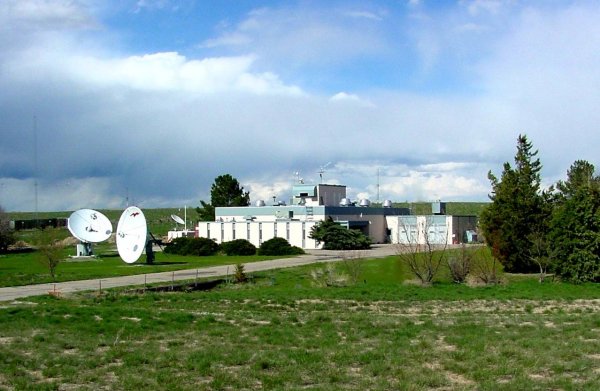|
|
|
|
|
NIST Radio Station WWV
|
|

|
|
| How it Works |
Signal Format |
Station Outages |
Broadcast Schedule |
Time Code |
Telephone Time |
WWV History |
WWV Photos |
QSL Gallery |
Hear signal |
Station Library |
NIST radio station WWV broadcasts time and frequency information 24 hours per day, 7 days per week to millions of listeners worldwide. WWV is located in Fort Collins, Colorado, about 100 kilometers north of Denver. The broadcast information includes time announcements, standard time intervals, standard frequencies, UT1 time corrections, a BCD time code, geophysical alerts, marine storm warnings, and Global Positioning System (GPS) status reports.
Broadcast Frequencies
WWV operates in the high frequency (HF) portion of the radio spectrum. The station radiates 10,000 W on 5, 10, and 15 MHz; and 2500 W on 2.5 and 20 MHz. Each frequency is broadcast from a separate transmitter. Although each frequency carries the same information, multiple frequencies are used because the quality of HF reception depends on many factors such as location, time of year, time of day, the frequency being used, and atmospheric and ionospheric propagation conditions. The variety of frequencies makes it likely that at least one frequency will be usable at all times.
Antennas
The WWV antennas are half-wave vertical antennas that radiate omnidirectional patterns. There are actually five antennas at the station site, one for each frequency. Each antenna is connected to a single transmitter using a rigid coaxial line, and the site is designed so that no two coaxial lines cross. Each antenna is mounted on a tower that is approximately one half-wavelength tall. The tallest tower, for 2.5 MHz, is about 60 m tall. The shortest tower, for 20 MHz, is about 7.5 m tall. The top half of each antenna is a quarter-wavelength radiating element. The bottom half of each antenna consists of nine quarter-wavelength wires that connect to the center of the tower and slope downwards to the ground at a 45 degree angle. This sloping skirt functions as the lower half of the radiating system and also guys the antenna.
| Frequency (MHz) | Latitude | Longitude |
| 2.5 | 40° 40’ 55.2" N | 105° 02’ 31.3" W |
| 5 | 40° 40’ 42.1" N | 105° 02’ 24.9" W |
| 10 | 40° 40’ 47.8" N | 105° 02’ 25.1" W |
| 15 | 40° 40’ 45.0" N | 105° 02’ 24.5" W |
| 20 | 40° 40’ 53.1" N | 105° 02’ 28.5" W |
Modulation
The signals broadcast by WWV use double sideband amplitude modulation. The modulation level is 50 percent for the steady tones, 50 percent for the BCD time code, 100 percent for the second pulses and the minute and hour markers, and 75 percent for the voice announcements.
Other Information about WWV and WWVH ...
| NIST Time and Frequency Services (NIST Special Publication 432) | |
| A detailed 80 page overview of NIST time and frequency services and how to use them. Chapter 3 is all about WWV and WWVH. |
|
| Frequently Asked Questions | |
| Answers to frequently asked questions about the NIST Radio Stations | |
| Manufacturers of Time and Frequency Receivers | |
| Links to manufacturers of WWV/WWVH and other time and frequency receivers | |
Questions? Send mail to: nist.radio@boulder.nist.gov
